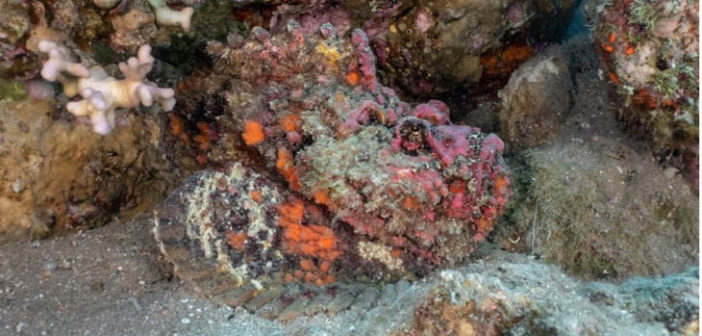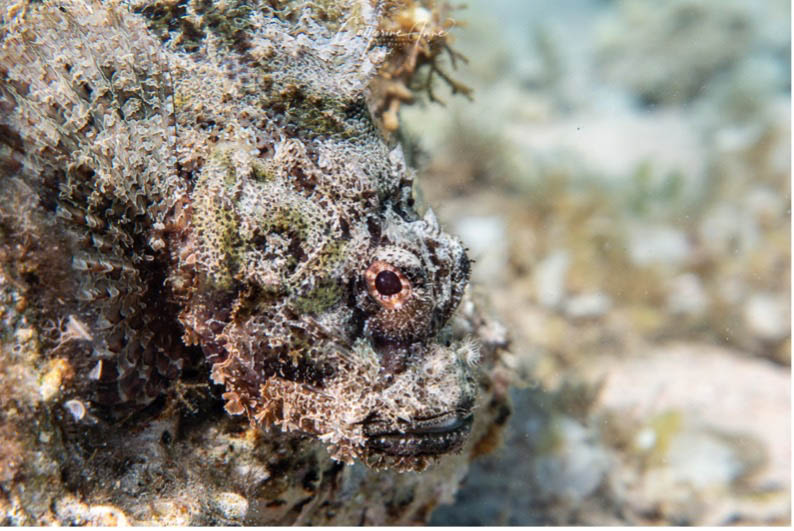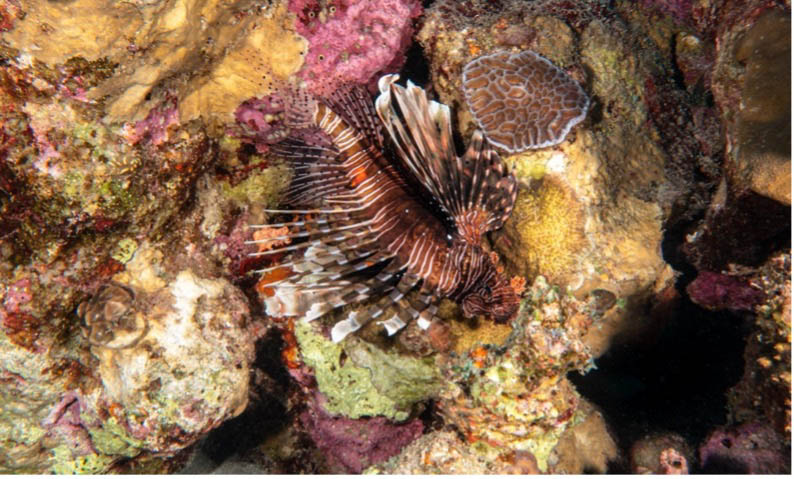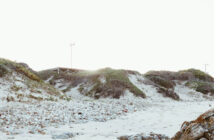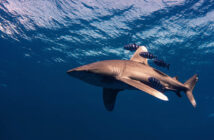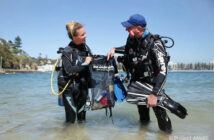The Red Sea is visited by many divers every year because it offers some of the best diving in the world. Gentle currents and temperate waters are a perfect environment for a large diversity of marine life. However, several marine creatures may be harmful and maybe even deadly for humans who come in direct contact with them. These include stonefish, lionfish, and scorpionfish. They live in tropical and temperate waters such as the Red Sea, Indian, and Pacific Oceans.
These creatures are not normally aggressive, but if they feel threatened their defense mechanisms might make them respond in such a manner. It is usually people’s lack of awareness that are the main cause of injuries by these animals. Therefore, it is best to be aware and avoid physical contact.
Stonefish
This is one fish that everyone should avoid as it is the world’s most venomous fish. The stonefish can inject venom through its dorsal fin spines. That venom can kill an adult in less than an hour. They often hide under the sand or in coral. Most stonefish injuries when an unsuspecting swimmer steps on one or touches one accidentally since they sit perfectly still, and they often blend in perfectly with their surroundings. It is very easy to swim right over these masters of disguise.
Scorpionfish
These fish are also very venomous. Like the stonefish, their dorsal fin injects dangerous venom. The venom is extremely painful to humans but potentially fatal to other animals. Scorpionfishes can be quite colorful and can easily blend into the corals or seagrass they may be resting on. They are expert predators as they can patiently sit perfectly still until unsuspecting prey cross their path. They use their large mouth to vacuum in and swallow their prey in an instant. They can swallow fish that are over half the size of their own body!
Lionfish
The lionfish is an extremely beautiful fish. It has zebra-like pattern on its spines and body. The fins are long and almost look like feathers. Their dorsal spines can inject venom that is quite painful. They don’t use their spines to hunt but they will use them in self-defense. Because they are extremely territorial, they will not hesitate to approach divers or snorkelers who get close. However, they will not attack.
Lionfish naturally inhabit the Gulf of Aqaba. But unfortunately, they have invaded the Atlantic Ocean and the Caribbean waters wreaking havoc on the ecosystem. They have extremely voracious appetites and no known predators. Lionfish are now found in the Atlantic Ocean, Gulf of Mexico, and the Caribbean Sea. A female lionfish can lay up to 2 million eggs a year, making them difficult to contain.
Look, beware, don’t touch!
Most scuba divers got into this sport to enjoy marine life. It is important to be aware of the creatures that are potentially venomous or fatal in any of the waters they may be diving in. Choose a professional and knowledgeable dive center to dive with and ask the guides questions about venomous creatures they may encounter.
If you’re looking for a professional scuba diving center in Aqaba, Jordan, located on the northeaster tip of the Red Sea, then Deep Blue Dive Center is a great choice! Deep Blue staff ensures that their clients have a safe and exciting scuba diving experience and truly love showing their visitors the beauty of the Gulf of Aqaba.




